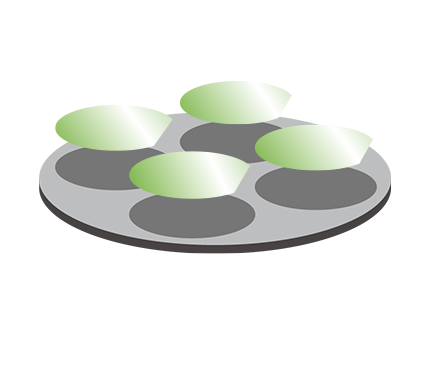Production Process of SiC Single Crystal
Silicon carbide single crystal is extremely rare in nature and can only be prepared by artificial synthesis. At present, the industrial production of silicon carbide substrate is mainly based on PVT method. This method needs to sublimate the powder with high temperature and vacuum, and then let the components grow on the seed surface through thermal field control, so as to obtain the silicon carbide crystals. The whole process is completed in an enclosed space, with few effective monitoring and many variables, which requires high process control accuracy.
SICC independently own the whole process from SiC powder to crystal growth and wafering.














